Colombian partisans. Is there any hope of ending the war?
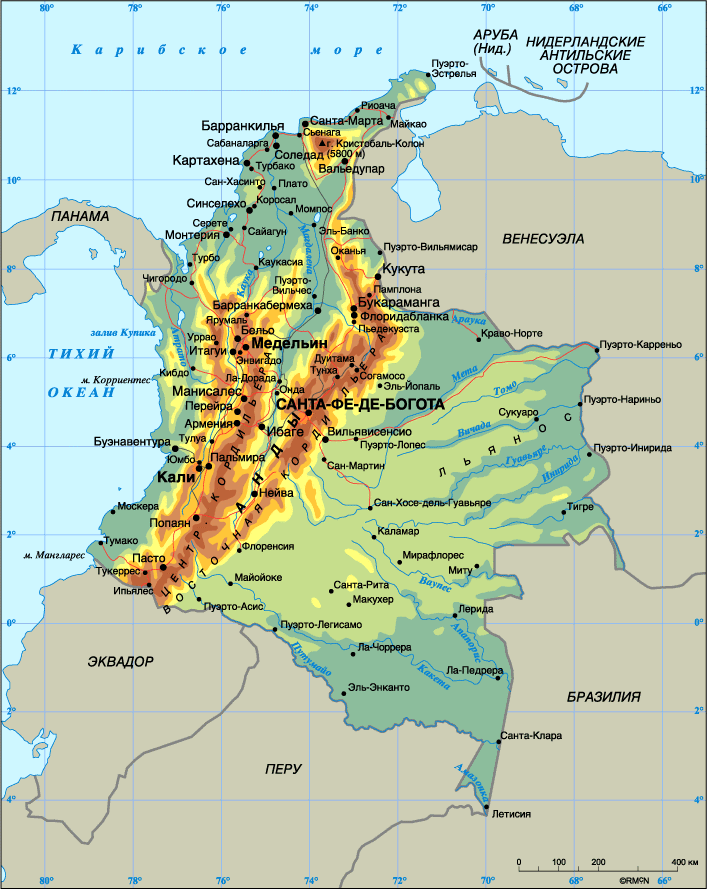
Background and the main causes of the war
Colombia is a remarkable country even by Latin American standards. The former Spanish viceroy of New Granada, Colombia declared independence in 1810, and in fact overcome the resistance of the Spanish colonialists during the famous war of liberation under the command of Simon Bolivar only in 1819. In 1819-1831. there was a state of Great Colombia, which included not only modern Colombia, but also Venezuela, Ecuador and Panama. Simon Bolivar was nurturing plans to unite the Spanish-speaking countries of Latin America into a single state and Great Colombia, in the opinion of the commander, was to become the basis of this unification. However, most of the generals entrenched in power in the former Spanish colonies did not support Bolivar’s idea of unification — everyone wanted to be an independent ruler. In 1831, Ecuador and Venezuela split off from Great Colombia, and in 1903, with US support, Panama was disconnected - the American leadership wanted to see the Panama Canal passing through the territory of a weak small state, which could be easily pressed if necessary.
3 November 1903 The Colombian government refused to give the US permission to build a transoceanic canal through the country. In response, the United States fomented separatist sentiments in Panama and, with the direct support of the Americans, Panamanian separatists raised an armed uprising and achieved separation from Colombia. After that, relations between Colombia and the USA seriously deteriorated for almost a decade. The situation changed after large oil fields were discovered in Colombia. This happened in 1916-1918. The First World War was on and the discovery of oil in Colombia could not but interest the United States. American companies began to infiltrate Colombia, gradually putting under control not only the oil industry, but also the country's agriculture. Significant territories of the country were used under the plantations of the famous United Fruit Company, which gained great influence in the countries of Central America and some countries of South America. It is with this period in the history of Latin American countries that the famous expression "banana republic" is associated. The American company, through its actions, managed to arouse hatred of both the trade union organizations that defended the interests of the hired workers exploited by the company, and the Indian tribes whose land the company occupied under plantations, ruthlessly chasing Indians out of the villages and depriving them of the opportunity to engage in the usual agricultural work or hunting and gathering in the forests. In 1928, at the United Fruit Company plantations, another strike broke out, which was brutally suppressed by security forces who staged a real massacre of hundreds of company workers. However, after the brutal reprisal, which, incidentally, is narrated in the novel of the world famous Colombian writer Gabriel García Márquez “One Hundred Years of Solitude”, strikes and unrest both on oil rigs and on the United Fruit Company plantations continued. The socio-economic situation in Colombia remained extremely difficult and reflected in the political environment. The liberal party, which shared democratic values, opposed the conservatives, who expressed the interests of large planters.
At the end of 1940's Among the Colombian peasantry and workers, the politician Jorge Elieser Gaitan (1903-1948), who was to be nominated by the Liberal Party for the presidency, gained great popularity. Gaitan was going to carry out democratic and socially oriented transformations in the country, for which he met with broad support from the masses. Since he could well count on success as a candidate for the presidency, the conservative-minded part of the Colombian political elite decided to crack down on a popular politician. 9 April 1948. He was shot dead by the killer while walking. Fidel Castro Ruz kept the memories of this man - then a modest law student, and in the future - the leader of revolutionary Cuba: “Our second meeting with Gaitan and other representatives of universities was to be held on April 9 at 2 in the afternoon. With one Cuban friend who accompanied me, I waited for an hour of meeting, walking along the avenue near the small hotel where we lived, and with Gaitan’s office, when some fanatic or madman, no doubt, at someone’s instigation, fired at the Colombian leader; the shooter was torn apart by the people. At that moment, the unimaginable days I experienced in Colombia began. I was a volunteer fighter in the ranks of this brave people. I supported Gaitan and his progressive movement, just as Colombian citizens supported our mambi in the struggle for independence ”(quoted in: Castro F. Sincerity and courage to be modest // http://cuba.in.ua/toprint.html ? id = 84). After the assassination of Gaitan, an armed uprising of the people began in the country, transforming into a civil war that lasted ten years and received the name "La Violencia". Officially, the conflict was considered a confrontation between liberal and conservative parties, but in reality it was used by rich latifundists to clarify the relationship between themselves and seize the lands of the country's peasant population. The detachments of bandits who were in the service of the oligarchs seized peasant lands and brutally massacred the villagers. During the civil war, at least 200-250 thousands of Colombians were killed. But it was precisely in these terrible years for the country that Colombian peasants, under the leadership of progressively-minded intellectuals, began to create the first armed groups to defend themselves against the attacks of gangsters and the government troops who were protecting the interests of the oligarchs. Despite the fact that, in the end, the liberals and conservatives managed to agree among themselves, the process of creating a popular movement has already been launched. Many peasant detachments continued to exist even after the end of the civil war. Gradually, among the Colombian peasants and urban workers and slum dwellers, socialist views spread. The leading role in the formation of guerrilla armed groups was played by the Colombian communists.
How the Revolutionary Armed Forces of Colombia were Created
The first attempts to create a Communist Party in Colombia were related to the beginning of the 1920s. and, in principle, had a random character. In 1922, one Sylvester Sawicki appeared in the capital of Bogota. The former Red Army commander, who worked for the Soviet government, was sent to China to organize the procurement of grain, but during his stay on Japanese territory came to the attention of the Japanese secret services and, fleeing from arrest, went to Panama. After moving to Colombia, Savitsky met a local socialist, Louis Tejada, and created a Marxist circle. 6 March 1924, the communist circle of Savitsky and Tekhada, formed the organizing committee of the Communist Party of Colombia, and on May 1, the establishment of the Communist Party of Colombia was announced. However, 1924 June 27. Mr. Sylvester Sawicki was deported from Colombia "for promoting doctrines that undermine social order, such as anarchism and communism." Further activities Savitsky continued in Mexico, where he participated in the work of the Mexican Communist Party until his death. 1925 July 17 was re-established by the Communist Party of Colombia. During Violencia, the Communists managed to extend their influence to the peasant partisan detachments, which subsequently did not stop the struggle after the reconciliation of the Colombian liberals and conservatives.
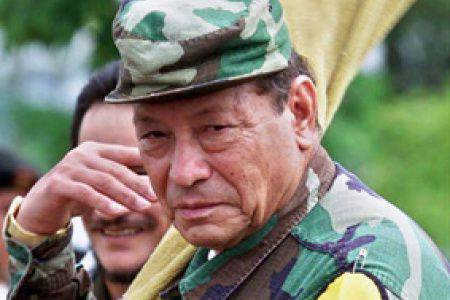 Part of the radical young partisans who had previously fought in the ranks of the liberal detachments joined the Communists. Among them was Pedro Antonio Marin (1930-2008), who entered world history under the pseudonym "Manuel Marulanda" (pictured). Grandfather and father Pedro Marina participated in the activities of the Liberal Party, although they were simple collectors of coffee. Marin himself in his youth joined the partisan detachment of the liberal party and participated in hostilities during the "Violencia". Acquainted with the student Jacobo Arenas, who was in communist positions, Marin also became a member of the Communist Party and changed his first and last name to Manuel Marouland. In 1964, the city of Marulanda formed an armed detachment of partisan peasants from 47, operating in the south of the Tolima department. At the same time, the detachment of the detachment took part in the battles against the government troops sent to the department to suppress the mass protests of the local civilians. Thus began more than half a century of history of the FARC - Revolutionary Armed Forces of Colombia (FARC), advocating the social and political liberation of the Colombian people and considered the armed formation of the Communist Party of Colombia. The partisans entrenched in the village Marchetalia, where the self-governing republic of the same name appeared. The peasants who lived in Marchetalia sold their agricultural products in the neighboring settlements. Initially, the inhabitants of Marchetalia did not cause any concern to the Colombian government; on the contrary, they tried to solicit assistance from the central authorities for the development of the social and economic infrastructure of the settlement. However, the government decided that Marketalia is a dangerous example of self-government and self-organization for other Colombian peasant communities and decided to eliminate the settlement by military means. An army group with a total of thousands of soldiers and officers in 16 was concentrated against Marchetalia. Colonel Hernando Currea Cubides, who commanded the 6 of the Colombian army infantry brigade, was directly in charge of the destruction of Marchetalia. The destruction of Marchetalia was considered as an integral part of the “Doctrine of National Security”, developed at the initiative of the United States and implemented in Latin American states that were actual satellites of the United States in the period under review.
Part of the radical young partisans who had previously fought in the ranks of the liberal detachments joined the Communists. Among them was Pedro Antonio Marin (1930-2008), who entered world history under the pseudonym "Manuel Marulanda" (pictured). Grandfather and father Pedro Marina participated in the activities of the Liberal Party, although they were simple collectors of coffee. Marin himself in his youth joined the partisan detachment of the liberal party and participated in hostilities during the "Violencia". Acquainted with the student Jacobo Arenas, who was in communist positions, Marin also became a member of the Communist Party and changed his first and last name to Manuel Marouland. In 1964, the city of Marulanda formed an armed detachment of partisan peasants from 47, operating in the south of the Tolima department. At the same time, the detachment of the detachment took part in the battles against the government troops sent to the department to suppress the mass protests of the local civilians. Thus began more than half a century of history of the FARC - Revolutionary Armed Forces of Colombia (FARC), advocating the social and political liberation of the Colombian people and considered the armed formation of the Communist Party of Colombia. The partisans entrenched in the village Marchetalia, where the self-governing republic of the same name appeared. The peasants who lived in Marchetalia sold their agricultural products in the neighboring settlements. Initially, the inhabitants of Marchetalia did not cause any concern to the Colombian government; on the contrary, they tried to solicit assistance from the central authorities for the development of the social and economic infrastructure of the settlement. However, the government decided that Marketalia is a dangerous example of self-government and self-organization for other Colombian peasant communities and decided to eliminate the settlement by military means. An army group with a total of thousands of soldiers and officers in 16 was concentrated against Marchetalia. Colonel Hernando Currea Cubides, who commanded the 6 of the Colombian army infantry brigade, was directly in charge of the destruction of Marchetalia. The destruction of Marchetalia was considered as an integral part of the “Doctrine of National Security”, developed at the initiative of the United States and implemented in Latin American states that were actual satellites of the United States in the period under review. However, the defeat of Marchetalia did not affect the activity of the partisan movement, rather the opposite - the communist guerrillas reached a new level thanks to a rethinking of their mistakes made at the stage of the existence of Marchetalia. Gradually, the ranks of the partisan movement grew as dissatisfaction with the government’s social and economic policies, enormous income differentials, harassment by landowners and industrialists, the dominance of American corporations in Colombia spread among an increasing number of Colombians. The aim of the FARC was to proclaim the development of the communist guerrilla for the overthrow of the capitalist system in Colombia and the transition to the construction of socialism and communism. The real peak in the revitalization of the FARC was in 1980-1990 - its years. and was associated with the discovery of a new source of funding for a revolutionary organization - the drug business. As is known, Colombia is the world's largest producer of coca. For hundreds of thousands of Colombian peasants, coca cultivation is the main source of income. As early as 1982, at the 7 conference of the FARC-AN, a decision was made to levy the revolutionary tax to the largest coca producers - the landowners and owners of illegal processing enterprises. Thus, the FARC was going to seek funds for the further supply of partisan detachments. The decision to tax coca producers sparked protests among some of the leaders of the Communist Party of Colombia, in connection with which members of the FARC created a new ideological wing - the Underground Communist Party of Colombia. In addition to taxing drug producers, the FARC-AN for a long time received funds from taking hostage government officials, foreign citizens, and businessmen. In 2008, this line of activity of the FARC was condemned by Fidel Castro himself, who nevertheless urged the organization not to stop armed resistance and continue its revolutionary activities.
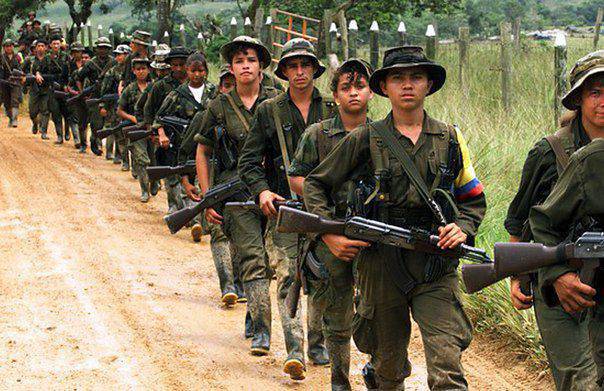
Revolutionary armed forces remain the largest radical left organization of Colombia, leading a guerrilla war against the government. The number of FARC-AN in the heyday of the organization in the 1990-ies. reached 17 000 fighters. In addition, the FARC has a large number of sympathizers, primarily Colombian peasants, without whose support the organization would not have been able to operate in rural areas for such a long time and control vast territories. In 1990's the combat units of the FARC-AN held at least 45% of the entire territory of the country under their control, which caused great concern not only for the Colombian authorities, but also for the American leadership, who saw the Cuban-style scenario in the organization’s activities. It was thanks to the American presence in Colombia that the government forces managed to press the Revolutionary armed forces significantly, but they still represent an active and effective force. The structure of the FARC is structured as an army. Platoons unite into partisan detachments, partisan detachments into units, units into columns, columns into fronts, and fronts into groups of fronts. In the FARC-AN, military ranks of the type of army are established, and an interesting nuance is that even the ranks of junior commanders correspond to posts implying command of units of a certain size. There is the following rank scale: soldier (partisan), junior corporal (deputy platoon commander), senior corporal (platoon commander), junior sergeant (deputy commander of a partisan detachment), senior sergeant (commander of a partisan detachment), sergeant-major (deputy commander of a partisan unit ), junior lieutenant (commander of a partisan formation), lieutenant (deputy commander of the column), captain (commander of the column), major (deputy commander of the front), lieutenant colonel (front commander), colonel (deputy commander about a group of fronts), brigadier general (commander of a group of fronts), major general (deputy chief of the general staff), army general (chief of the main staff of the FARC-AN). A large number of foreign volunteers are fighting in the ranks of the FARC-AN - most often they are Communists by conviction or anti-imperialists - opponents of US dictatorship. Most of the volunteers come from neighboring Latin American countries, but there are also Europeans in the ranks of the FARC. For example, the highly textured, outwardly Dutch Tanya Niemeyer, who became one of the official representatives of the FARC-AN in numerous negotiations with the Colombian authorities and international organizations, gained worldwide fame.
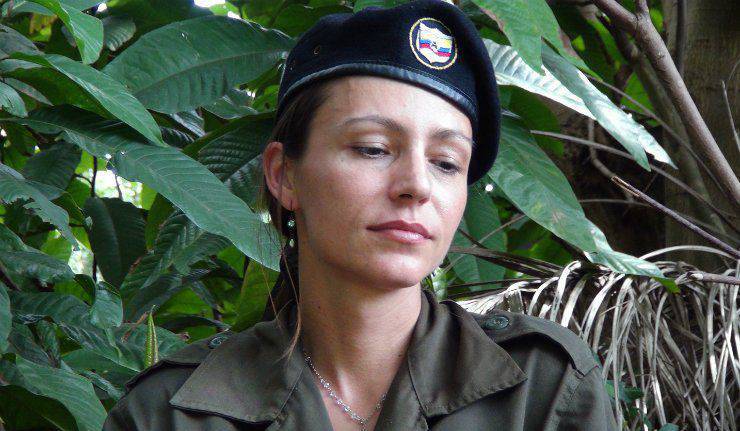
According to Tanya Niemeyer, the US attention to the country, manifested since the 19th century and due to the presence of large natural resources on the territory of the country, had very negative consequences for Colombia. The danger of American influence in Colombia was stressed by Simon Bolivar, the “author” of Colombian independence, whose ideas the FARC-AN also shares. Currently, the United States is striving with all its might to suppress the Colombian revolutionary movement, using the fight against drug production as its main excuse. Allegedly, with the aim of organizing assistance to the Colombian government in the fight against the drug business, a large number of American military personnel and specialists of special services, including the CIA and the FBI, are in the country. For a long time, the Revolutionary Armed Forces of Colombia had its own radio station, the Voice of Resistance, which was broadcast from the jungle not only to Colombia, but also to Europe. The radio propaganda of communist ideas was carried out, the policy of the USA and the Colombian government was criticized, and musical works popular in Colombia were broadcast. 19 November 2011 The Colombian government forces interrupted the work of the radio station, “covering” the FARC camp in Meta province.
The army of liberation created the priests
In addition to the Revolutionary Armed Forces of Colombia (FARC), focused on Marxism-Leninism and acting as the armed wing of the Communist Party of Colombia, other radical left-wing organizations appeared in the country, focused on the armed partisan struggle against the pro-American government. In the same 1964, as the FARC-AN, the Colombian National Liberation Army was founded, with Colombian students led by Fabio Vázquez, who had visited Cuba and adopted the ideas of Hevarism. In contrast to the FARC-AN, representatives of the clergy initially played a large role in the activities of the National Liberation Army. Strangely enough, but in Latin America, it is often the priests who lead the revolutionary movements. It is sometimes the only representatives of intellectual work who are in regular interaction with the peasants of even the most backward and remote areas. Therefore, on the one hand, the priests are well aware of the life and way of life of the peasant population of Colombia, and on the other hand, the peasants respect and trust those priests who really care about the people and wish them well.
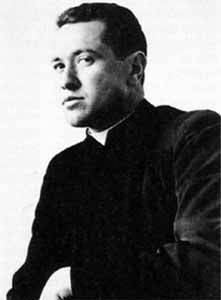 During the early stages of its existence, Father Camilo Torres himself (1929-1966), a university professor who taught at the sociological department of Columbia National University and was also a Catholic priest, fought in the ranks of the Army of National Liberation. Camilo Torres was at the forefront of the “liberation theology,” which spread in Colombia and later in other Latin American countries, a concept that combined Christianity with Marxist and socialist ideas.
During the early stages of its existence, Father Camilo Torres himself (1929-1966), a university professor who taught at the sociological department of Columbia National University and was also a Catholic priest, fought in the ranks of the Army of National Liberation. Camilo Torres was at the forefront of the “liberation theology,” which spread in Colombia and later in other Latin American countries, a concept that combined Christianity with Marxist and socialist ideas. In the partisan detachment, Camilo Torres served as a "political officer" and a doctor. He equipped a forest church, where in addition to the crucifixion hung portraits of Lenin and Castro. However, in the first battle with the military patrol of the Colombian government forces, padre Camilo Torres was killed. But after his death, another priest, Padre Manuel Perez Martinez, became active in the ranks of the National Army of the Liberation of Colombia. It is he who is the main developer of the ideology of the National Liberation Army, which is a mixture of liberation theology and hevarism, including “Phokism” - the concept of creating “revolutionary foci” in the jungle. The Christian installations of ANO contribute to its popularity among the faithful peasants of the Colombian provinces. Armed struggle ANO took place in parallel with the struggle of the FARC. For several decades, a small armed group of about thirty people has become a powerful partisan organization, the main part of which consists of peasants joining it under the influence of the sermons of priests who sympathize with “liberation theology”. The main activities of the autonomous non-profit organization were the seizure of towns and villages, the release of prisoners from prisons and the expropriation of money in banks, the killing of the most odious law enforcement officials and commanders of Colombian armed forces units. The organization’s activities were mainly in the Santander department. At the end of 1990's the number of ELNs was about 500 people, that is, by the degree of influence, it was many times inferior to the FARC, but it was quite active and had an uncompromising position (it was ANO that became the only partisan organization that did not sign the 1984 agreement of the year).
Maoists ’Ano and April 19 Movement
Three years later than the FARC and the autonomous non-profit organization, another large partisan organization appeared - the National Liberation Army, which became active in the north of Colombia and also supported the rural population. In contrast to the FARC and the autonomous non-profit organization, the National Liberation Army focused on Maoist ideology and was an armed formation of the pro-Chinese wing of the Colombian communist movement - the Marxist-Leninist Party of Colombia. The National Liberation Army could not reach a level of activity comparable to the FARC-AN and even the National Liberation Army of Colombia. In 1999, the organization dissolved itself. Another influential organization was the April 19 Movement (M-19), which was created in 1974 and named after a key event in the country's political life - the defeat of the former dictator Rojas in the 19 presidential election of April 1970. ANO, M-19 never adhered to Marxist-Leninist ideas, but focused on a radical variant of Bolivarianism with an admixture of socialist views. The former congressman Dr. Carlos Toledo Plata and Jaime Bateman Kayin headed M-19. Carlos Plata, who led the political wing of the organization and was responsible for ideology and propaganda, died at the hands of pro-government militants. Jaime Kayin died in a plane crash, after which the organization was headed by Carlos Pizarro Leon Gomez. Initially, the 19 Movement of April was active primarily in the form of expropriations of banks, then switched to a sabotage strategy, and then launched a loud action of a more advertising nature - it stole Bolivar’s spurs and sword from the exhibition organized in his former residence. By this, the activists of the Movement have shown that the existing Colombian regime is not worthy of the memory of the heroic founder of Colombian statehood. In June, 1984 M-19 participated in the signing of an armistice agreement with the government, but then resumed operations. In the middle of 1980's. in the ranks of M-19, there were about 2000 people, while the branches of the 19 Movement of April operated in almost all cities of the country. The focus on guerrilla warfare in urban environments was one of the key differences between M-19 and FARC and the autonomous non-profit organization, which conducted military operations mainly in rural areas. In 1990, the April 19 Movement ceased to exist as an armed organization and legalized as a political party, Democratic Alliance M-19.
The successes of the anti-partisan struggle
For the Colombian revolutionary underground and partisan organizations 2000-ies. have become a time of gradual reduction of opportunities, although both the FARC-AN and the autonomous non-profit organization are still active. After in 2002, the son of a large landowner killed by the FARC-AN fighters, Alvaro Uribe, was elected president of Colombia. When he was governor, Uribe was able to almost destroy the partisan movement in the territory governed by him, organizing self-defense detachments of peasants controlled by the government. Leading the country, Uribe concluded an agreement with the United States on the training of Colombian special forces by American military instructors, after which he rather quickly increased the combat capability of the units fighting against the partisans and improved the coordination of joint actions of the army, police and peasant self-defense units. Successes Uribe contributed to the growth of its popularity among the conservative part of the population of the country. In 2007, government forces changed the tactics of fighting partisans - now special forces and helicopter-assault squadrons were operating against the FARC-AN, the autonomous non-profit organization and other formations. The effectiveness of the actions of the government forces against the guerrillas has sharply increased, as a result of which the number of FARC-AN has been reduced from 17 000 to 9 000 people. As a result of the operations of the special forces, at least 100 of senior commanders of the FARC-AN, including the commander of the Caribbean Front Group, Brigadier General Díaz and the commander of the 16 Front, Thomas Medin, were killed. March 1 The Colombian air force 2008 launched an air raid on the territory of neighboring Ecuador, since it was used by the FARC-AN for a long time to accommodate training facilities. Colombian authorities blamed the leadership of Ecuador and Venezuela for supporting the insurgency in the country. As a result of the raid, 17 militants of the FARC-AN were killed, including Raul Reyes (1948-2008), the second person in the hierarchy of the Revolutionary Armed Forces of Colombia, who was responsible for the organization’s international relations. Former leader of the Nestlé workers' union, Raul Reyes, as a young man, went underground and held senior positions in the leadership of the FARC-AN. He was even considered as the successor to Manuel Marulanda as commander-in-chief of the FARC-AN. Three weeks after the death of Comandante Raul Reyes, FARC-AN suffered a new hard blow - 26 March 2008 Manuel Maroulanda died from myocardial infarction (1930-2008) - 77-year-old revolutionary, during the last 60 years of his life, participated in a partisan and being in an illegal position.
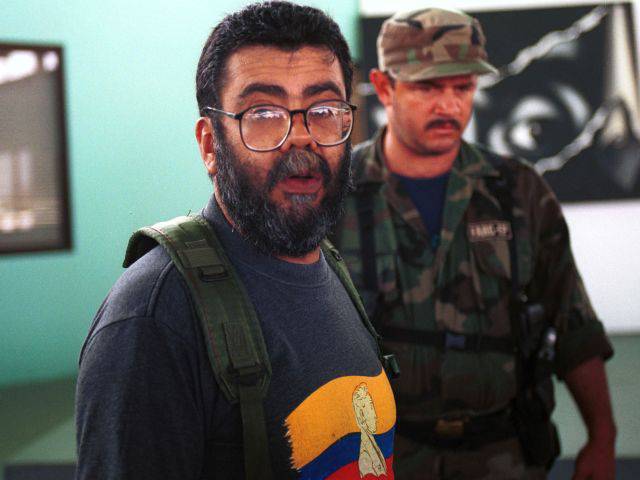
After his death, the post of Commander-in-Chief of the FARC-AN was occupied by Comandante Alfonso Cano (1948-2011, his real name is Guillermo Leon Saenz Vargas). In his youth, Alfonso Cano studied at the law faculty of the university, and after graduation he almost immediately joined the FARC-AN and went into hiding. It was he who stood at the foundations of the creation of the Underground Communist Party of Colombia - the political wing of the FARC-AN. After Kano replaced the deceased Maruland at the head of the Revolutionary Armed Forces, the Colombian government began an intensified persecution of the new partisan leader. About 4 thousand soldiers and officers of government forces were sent to catch Kano himself, and a large reward was promised to his head - 4 million dollars for information allowing to determine the location of the commander-in-chief of the FARC-AN. Such measures eventually led to the desired result - as a result of the special operation “Odyssey” 4 in November 2011. Alfonso Cano was killed in the Colombian mountains, and several high-ranking partisans, including the security chief of the Revolutionary Armed Forces of Colombia, fell into the hands of government troops.
The death of Alfonso Kano made the leadership of the FARC-AN reconsider their attitude towards their own security. Timoleon Jimenez (he is known by the nickname “Timoshenko”) was appointed new commander-in-chief of the FARC-AN and is currently in this position. Timoleon Jimenez is a revolutionary pseudonym, the real name of the Commander-in-Chief of the Revolutionary Armed Forces - Rodrigo Londogno Echeverri. He was born in 1959 in the Colombian department of Quindio, and after graduating from school he went to get a medical degree in cardiology in the Soviet Union, then to Cuba. Jimenez passed military training in Yugoslavia, and in March 1982 joined the FARC-AN and quickly made his career there, earning universal respect among the guerrilla as a tough and fearless warlord. Already in 1986. 27-year-old Jimenez was actually the fifth person in the command hierarchy of the FARC-AN, joined the guerrilla secretariat. It was he who led the activities of the partisans in the department of North Santander. The United States of America accuses Jimenez of organizing the drug business in Colombia, and the Colombian authorities of kidnapping, murder and uprising. In May, a Colombian court in 2006 sentenced Jimenez in absentia to 40 years in prison for murder and kidnapping. The US Department of State Jimenez is accused of organizing the production and trafficking of cocaine, and for information on his whereabouts the US government is prepared to pay a reward of 5 million dollars. Meanwhile, it was Timoleon Jimenez who became the first leader of the FARC-AN, who spoke in favor of peaceful negotiations with the authorities of Colombia and was even ready to discuss the development of a market economy and political democracy in Colombia.
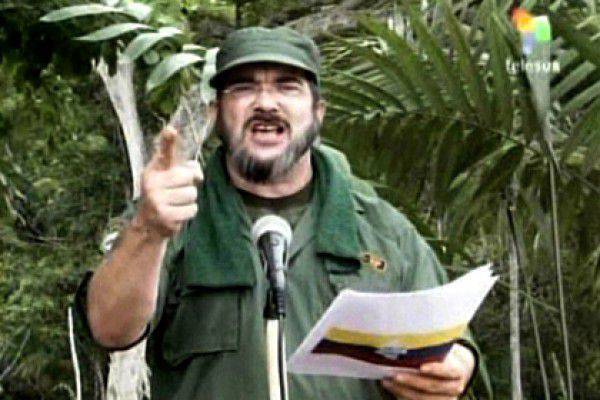
- Acting Commander-in-Chief of the FARC-AN, General Timoleon Jimenez ("Timoshenko")
Negotiations - a chance for peace?
In 2012, the Colombian leadership began peace negotiations with the command of the FARC-AN. 23 September 2015 President of Colombia Juan Manuel Santos and Commander-in-Chief of the FARC-AN Timoleon Jimenez met in Havana, where, with the mediation of Cuban President Raul Castro, they signed an agreement on the timing of peace agreements. In accordance with this agreement, at the end of November 2015, the process of putting weapons and demobilization fighters FARC-AN. In turn, the government will consider the issue of amnesty for the partisans of the Revolutionary Armed Forces of Colombia. In 2013, the Colombian government entered into negotiations with the command of the National Liberation Army of Colombia, whose armed forces now include at least 3000 militants. The Colombian government initiated negotiations with an autonomous non-profit organization after the militants released a Canadian geologist who had been captured by them hostage for seven months. In March, 2015, the ANO, released four geologists who had been held hostage since February 2015. The liberated geologists were transferred to the Red Cross mission staff in the province of Norte de Santander. Negotiations with the autonomous non-profit organization continued until 2015, however, in parallel, government forces conducted military operations against the partisan detachments of the National Liberation Army. 14 June 2015 The world media reported that as a result of a special operation by Colombian government forces, the head of the ANO, Jose Amin Hernandez Manrique, known as "Marcos" or "Markithos", was killed. Recently, the forces under his command acted in the west of Colombia. In early October 2015, the Colombian authorities reported the liquidation of the famous partisan commander and, according to government media reports, drug lord Viktor Navarro. Until the end of 1990's Victor Navarro acted as part of the Maoist National Liberation Army of Colombia, but after its self-dissolution he refused to lay down arms and continued to resist at the head of his own squad. The guerrillas called him "Megateo", and he himself claimed that he was collecting a tax on cocaine trade in order to finance the "people's war" against the Colombian government.
It should be noted that Colombia is a country of eternal guerrilla war. There is something in common with Colombia and Afghanistan - these countries, where continuous war lasts, are also the largest exporters of drugs. Both there and there the American military contingents operate, the American special services are very active. It is clear that without a “revolutionary tax” imposed on cocaine producers and traders, Colombian revolutionary guerrillas would not have been able to finance their activities, but after all, right-wing conservative forces, expressing US interests, also receive a significant portion of the proceeds from drug trafficking. It is not by chance that when the FARC-AN and the drug mafia detachments divided the “spheres of influence”, the Colombian government forces, trained and led by American military advisers, stood on the side of the latter. The United States considers Colombia as an outpost of its influence in Latin America and a military base for the deployment of American units. The United States provides Colombia with colossal military assistance — the country ranks third in the list of countries enjoying US defense support — after Egypt and Israel. In fact, it is the United States that is responsible for funding, arming and training units of the Colombian army and police, which cost the US budget billions of dollars. Despite the collapse of the Soviet Union and the socialist camp in Eastern Europe in 1991, in Latin America, socialist and revolutionary ideas remain highly popular, which cannot but scare the American leadership. Leftist forces are in power in Cuba, Nicaragua, Venezuela, Bolivia, the leftists win elections in Ecuador, Brazil, and Uruguay. Against this background, Colombia remains the most reliable military-political ally of the United States, so the American leadership is ready to provide comprehensive military assistance to the Colombian armed forces. However, in Colombia, in comparison with other Latin American countries, one of the most stringent regimes in relation to the opposition operates, and the economic well-being of the population leaves much to be desired. Although the country has enormous natural resources, a significant portion of the population lives in poverty. Below the poverty line lives at least half of the Colombian population. Entire regions of the country are not actually controlled by the central government, while drug cartels and criminal groups play the role of “shadow control” in these territories. Political instability, armed conflicts, drug trafficking are destructive factors for the development of the country, impeding the development of the economy and infrastructure, attracting foreign investment in the economy and improving the living standards of the local population.
Information